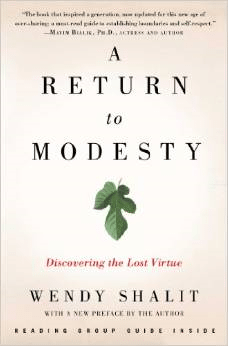As someone who works in the media, I am well aware that certain myths get started and have a life of their own. A number of these myths are promoted and disseminated by feminists and can be found in the book Who Stole Feminism? The author, Christina Hoff Sommers, though a feminist, has been concerned for some time about the prominence of these myths and does a masterful job tracing down the origin of each and setting the record straight. If you want more information on any of these, I would recommend you obtain her well-documented book.
Myth of the Extent of Anorexia Nervosa
In her book Revolution from Within, Gloria Steinem informed her readers that “in this country alone…about 150,000 females die of anorexia each year.” To put this dramatic statistic in perspective, this is more than three times the annual number of fatalities from car accidents for the total population. The only problem with the statistic is that it is absolutely false.
Lest you think that this was a mere typographical error, consider the following. The statistic also appears in the feminist best- seller The Beauty Myth by Naomi Wolf. “How,” she asks, “would America react to the mass self-immolation by hunger of its favorite sons?” While admitting that “nothing justifies comparison with the Holocaust,” she nevertheless makes just such a comparison. “When confronted with a vast number of emaciated bodies starved not by nature but by men, one must notice a certain resemblance.”
What was the source of this statistic? Ms. Wolf got her figures from Fasting Girls: The Emergence of Anorexia Nervosa as a Modern Disease by Joan Brumberg, a historian and former director of women’s studies at Cornell University. It turns out that she misquoted the American Anorexia and Bulimia Association which had stated that there are 150,000 to 200,000 sufferers (not fatalities) of anorexia nervosa. The actual figure is many orders of magnitude lower. According to the National Center for Health Statistics, there were 70 deaths from anorexia in 1990. Even 70 deaths is tragic, but 70 deaths out of population of over 100 million women can hardly be considered a holocaust.
Apparently Naomi Wolf plans to revise her figures in an updated version of The Beauty Myth, but the figure is now widely accepted as true. Ann Landers repeated it in her 1992 column by stating that “every year, 150,000 American women die from complications associated with anorexia and bulimia.” The false statistic has also made it into college textbooks. A women’s studies text, aptly titled The Knowledge Explosion, contains the erroneous figure in its preface.
Myth of Amount of Domestic Violence
On November 1992, Deborah Louis, president of the National Women’s Studies Association, sent a message to the Women’s Studies Electronic Bulletin Board. It read, “According to [the] last March of Dimes report, domestic violence (vs. pregnant women) is now responsible for more birth defects than all other causes combined.” On February 23, 1993, Patricia Ireland, president of the National Organization for Women, said on the Charlie Rose program that “battery of pregnant women is the number one cause of birth defects in this country.”
Certainly unsettling data. But again, the biggest problem is that the statistic is absolutely false. The March of Dimes never published the study and did not know of any research that corroborated the statement.
Nevertheless, journalists willingly recited the erroneous statistic. The Boston Globe reported that “domestic violence is the leading cause of birth defects, more than all other medical causes combined, according to a March of Dimes study.” The Dallas Morning News reported that “the March of Dimes has concluded that the battering of women during pregnancy causes more birth defects than all the diseases put together for which children are usually immunized.”
When Time magazine published essentially the same article, the rumor started spinning out of control. Concerned citizens and legislators called the March of Dimes for the study. Eventually the error was traced to Sarah Buel, a founder of the domestic violence advocacy project at Harvard Law School. She misunderstood a statement made by a nurse who noted that a March of Dimes study showed that more women are screened for birth defects than they are for domestic battery. The nurse never said anything about battery causing birth defects.
Although we could merely chalk this error up to a misunderstanding, it is disturbing that so many newspapers and magazines reported it uncritically. Battery causing birth defects? More than genetic disorders like spina bifida, Downs syndrome, Tay-Sachs, sickle-cell anemia? More than alcohol, crack, or AIDS? Where was the press in checking the facts? Why are feminist myths so easily repeated in the press?
Myth of Increased Domestic Battery on Super Bowl Sunday
In January 1993 newspaper and television networks reported an alarming statistic. They stated that the incidence of domestic violence tended to rise by 40 percent on Super Bowl Sunday. NBC, which was broadcasting the game, made a special plea for men to stay calm. Feminists called for emergency preparations in anticipation of the expected increase in violence.
Feminists also used the occasion to link maleness and violence against women. Nancy Isaac, a Harvard School of Public Health research associate specializing in domestic violence, told the Boston Globe: “It’s a day for men to revel in their maleness and unfortunately, for a lot of men that includes being violent toward women if they want to be.”
Nearly every journalist accepted the 40 percent figure–except for Ken Ringle at the Washington Post. He checked the facts and was able to expose the myth, but not before millions of Americans were indoctrinated with the feminist myth of male aggression during Super Bowl Sunday.
Myth Concerning Percent of Women Raped
The Justice Department says that 8 percent of all American women will be victims of rape or attempted rape in their lifetime. Feminist legal scholar Catherine MacKinnon, however, claims that rape happens to almost half of all women at least once in their lives.
Who is right? Obviously, the difference between these two statistics stems from a number of factors ranging from under- reporting to very different definitions of rape. The Justice Department figure is obviously low since it is based on the number of cases reported to the police, and rape is the most under- reported of crimes.
The feminist figures are artificially high because they use very broad definitions of rape and let the questioner rather than the victim decide whether there was a rape or not. The two most frequently cited studies are the 1985 Ms. magazine study and the 1992 National Women’s Study. The Ms. magazine study of 3,000 college students gave a statistic of about 1 in 4 for women who have been raped or victim of an attempted rape. However, the study used very broad definitions of rape which sometimes included kissing, fondling, and other activities that few people would call rape. In fact, only 27 percent of those women counted as having been raped actually labeled themselves as rape victims. Also, 42 percent of those counted as rape victims went on to have sex with their “attackers” on a later occasion.
The National Women’s Study released a figure of 1 in 8 women who have been raped. Again the surveyors used extremely broad, expanded definitions of rape that allowed the surveyor to decide if a woman had been raped or not.
The statistics for “date rape” and rape on campus have also been exaggerated. Camille Paglia warns that “date rape has swelled into a catastrophic cosmic event, like an asteroid threatening the earth in a fifties science-fiction film.” Contrast this with the date- rape hype on most college campuses that includes rallies, marches, and date-rape counseling groups.
Peter Hellman, writing for New York magazine on the subject of rape on campus, was surprised to find that campus police logs at Columbia University showed no evidence of rape on campus. Only two rapes were reported to the Columbia campus police, and in both cases, the charges were dropped for lack of evidence. Hellman checked figures for other campuses and found fewer than .5 rapes per campus. He also found that public monies were being spent disproportionately on campus rape programs while community rape programs were scrambling for dollars.
The high rape numbers serve gender feminists by promoting the belief that American culture is sexist and misogynist. They also help liberal politicians by providing justification for additional funding for social services. Senator Joseph Biden introduced the Violence Against Women Act to “raise the consciousness of the American public.” He argues that violence against women is much like racial violence and calls for civil as well as criminal remedies.
Myth Concerning Female Self-esteem
In 1991, newspapers around the country proclaimed that the self- esteem of teenage girls was falling. The New York Times announced, “Little girls lose their self-esteem on way to adolescence, study finds.”
The study was commissioned by the American Association of University Women (AAUW) to measure self-esteem of girls and boys between the ages of nine and fifteen. Their poll seemed to show that between the ages of eleven and sixteen, girls experience a dramatic drop in self-esteem, which in turn significantly affects their ability to learn and to achieve. The report made headlines around the country and led to hundreds of conferences and community action projects.
Here is how the AAUW summarized the results of the survey in their brochure: In a crucial measure of self-esteem, 60 percent of elementary school girls and 69 percent of elementary school boys say they are “happy the way I am.” But, by high school, girls’ self-esteem falls 31 points to only 29 percent, while boys’ self- esteem falls only 23 points to 46 percent.
Girls are less likely than boys to say they are “pretty good at a lot of things.” Less than a third of girls express this confidence, compared to almost half the boys. A 10-point gender gap in confidence in their abilities increases to 19 points in high school.
It turns out that the report didn’t even define the term self- esteem, or even promote an informal discussion of what the authors meant by it. Other researchers suspect that the apparent gap in self-esteem may merely reflect a gap in expressiveness. Girls and women are more aware of their feelings and more articulate in expressing them, and so they are more candid about their negative emotions in self-reports than males are.
When asked if they are “good at a lot of things,” boys more often answered, “all the time,” whereas girls, being more reflective, gave more nuanced answers (“some of the time” or “usually”). Although the surveyors decided that the girls’ response showed poor self-esteem, it may merely reflect a “maturity gap” between boys and girls. Boys, lacking maturity, reflectiveness, and humility, are more likely to answer the question as “always true.”
Myth of Discrimination Against Females in School
An American Association of University Women (AAUW) report argued that schools and teachers were biased against girls in the classroom. The Wellesley Report, published in 1992, argued that there was a gender bias in education. The Boston Globe proclaimed that “from the very first days in school, American girls face a drum-fire of gender bias, ranging from sexual harassment to discrimination in the curriculum to lack of attention from teachers, according to a survey released today in Washington.” The release of this study was again followed by great media attention and the convening of conferences. It also provided the intellectual ammunition for the “Gender Equity in Education” bill introduced in 1993 by Patricia Schroeder, Susan Molinari, and others. It would have established a permanent and well-funded gender equity bureaucracy.
Are women really being damaged by our school system? Today 55 percent of college students are female, and women receive 52 percent of the bachelor’s degrees. Yes, girls seem somewhat behind in math and science, but those math and science test differentials are small compared with the large differentials favoring girls in reading and writing.
The study also assumed that teachers’ verbal interactions with students indicated how much they valued them. The surveyors therefore deduced that teachers valued boys more than girls. However, teachers often give more attention to boys because they are more immature and require the teacher to keep them in line. Most girls, being more mature, don’t want the attention or verbal discipline and need less negative attention to get their work done.
Myth of Huge Gender Wage Gap
A major rallying cry during the debates on comparable worth was that women make 59 cents for every dollar men do. The figure is now 71 cents. But if you factor in age, length of time in the workplace, and type of job, the wage gap is much smaller for younger women. Those with children tend to make slightly less than those without children, but it’s closer to 90 cents.
Feminists argue that the pay gap is a vivid illustration of discrimination. Economists argue that it’s due to shorter work weeks and less workplace experience. It is no doubt also due to the kind of jobs women choose. Women generally prefer clean, safe places with predictable hours and less stress. The more dangerous, dirty, and high-pressure jobs generally appeal to men. This is reflected in salary differences.
©1996 Probe Ministries.










